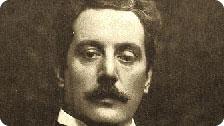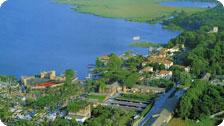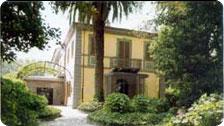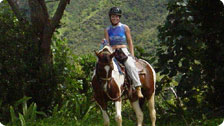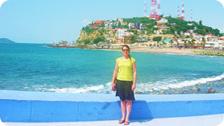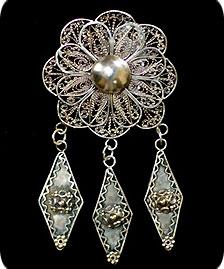Culture: Italy: Il Maestro’s Villa
by Wendy H. King
Like a medieval knight making a pilgrimage to the Holy Land in search of the Holy Grail, I set off to Italy, the birthplace of opera, to visit composer Giacomo Puccini’s Villa at Torre del Lago, situated west of Lucca between Lago di Massaciuccoli and the Mediterranean. Within the Tuscan villa’s walls, Puccini wrote most of his operas between 1891 and 1921. My quest was to walk through the rooms where he worked.
My passion for opera began when, after returning to San Francisco from teaching English in Milan, I began taking opera lessons. I scoured the library’s tapes for material, and fell in love with Puccini’s Manon Lescaut.
Lescaut scorched my soul in a way no other opera had done before. I played sections of the piece over and over. In my fourth year of study, I made my pilgrimage to Italy to visit Puccini’s villa.
Taking a day trip from Lucca, I hopped on a train for the ten-mile ride to the coastal town of Viareggio, where I boarded a bus that took me directly to the villa. The Villa was a modest, two-story house painted in light yellow and gray, fifty yards from the lake. A large palm tree shaded the building, and at the end of the walkway on the left side of the house I found the entrance. A tall, slender, gray-haired man wearing a red San Francisco 49ers sweatshirt met and escorted visitors into the house. His father had been the villa’s caretaker when Puccini was alive.
Our guide escorted us through the small rooms, pointing to various photographs and objects and entertaining us with stories about the composer.
Tre cose piacciono a Puccini: la musica, la caccia, e le donne, he told us. Puccini liked three things: music, hunting, and women.
I glided through the shrine, my feet barely making contact with the floor. The other visitors, only remotely interested in the villa, moved quickly through the small rooms, whereas I wanted to savor each room slowly. As we were not allowed to take photos, I commanded my eyes to memorize everything I saw in the composer’s refuge.
In one room, I recognized a photo of the composer as a young man, with his thick dark wavy hair and mustache, that I had often seen in the Caffe Puccini in North Beach in San Francisco. Standing by the maestro’s black upright piano, I touched it reverently when the guide wasn’t looking, hoping to feel Puccini’s spirit.
As the tour came to an end, I worried I wouldn’t remember anything of my beloved composer’s villa. There simply wasn’t enough space or sufficient time to absorb it all.
The other guests scampered out of the villa, thanked the tour guide, and walked quickly to their cars. I lingered behind, reveling in every last moment. I didn’t want to leave the villa, not yet. I wasn’t finished. I needed more time with the maestro. At the exit I struck up a conversation with the guide.
“There were so many people on the tour I didn’t get to see everything. I’m studying opera and love Puccini’s music. I came all the way from San Francisco to see the villa. Would it be possible to take the tour again? I will pay to see it once more,” I pleaded in Italian. He obliged me and took me back into the house.
“You take however much time you need,” he graciously offered, smiling.
As I walked with the guide through the villa again, I relished being the only tourist in the house. I had Puccini all to myself.
The composer’s studio looked the way it did the day the maestro died. To the left of the piano facing the window was an elegantly carved wooden table. On it were writing instruments, ink and paper, and an electric brass table lamp that once illuminated the workspace. To the left and right of the piano were white candles. I imagined Puccini composing at night, lost in musical reverie, turning to the table to record the melodies his fingers carved out while embers from the large fireplace warmed the room.
Near the studio, Puccini’s son Antonio built a mausoleum of Carrara marble, the same stone Michelangelo used to carve his David and Pietà. Originally buried in Milan, Puccini’s remains were transported in 1928 to Torre del Lago, the place he loved the most, four years after his death. Standing beside the black marble sarcophagus, I thanked him for writing such thrilling music.
My eyes photographed all I saw the second time: the blue and red painted shutters, the gold and red art deco wallpaper, the summer sun streaming through the window by the maestro’s piano, his hunting gear on the walls, his death mask, and the autographed pictures of other music titans of his era.
While exiting, I thanked the guide for allowing me to walk through the villa again and offered to pay for the second tour. Noting my sincerity and great respect for the composer, he wouldn’t accept it. His reward was seeing the adoration of the young opera student from San Francisco who was innamorato di, in love with, Puccini. I think he liked the idea that, even from his grave, Puccini still made a lady’s heart flutter.
Discover more from Tango Diva
Subscribe to get the latest posts sent to your email.
